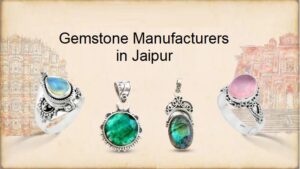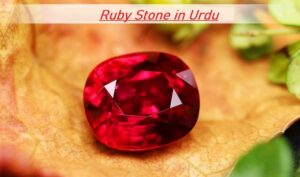
Introduction
Wearing a kilt is not just about donning a unique piece of clothing; it’s a way to pay homage to Scottish heritage and traditions. Kilts have a rich history and cultural significance in Scotland, and understanding how to wear a kilt traditionally is essential for those who appreciate the symbolism behind this iconic garment. In this article, we will explore the origins of kilts, and the components of traditional Scottish Highland dress, and provide a step-by-step guide to wearing a kilt in the traditional manner.
Historical Background of Kilts
Origins of the Kilt
The kilt, as we know it today, traces its roots back to the Scottish Highlands. While the exact origins of the kilt are debated, evidence suggests that it has existed in various forms for centuries. Early iterations of the kilt resembled a full-length belted garment known as the “féileadh mòr” or “great kilt,” which was draped around the body.
Evolution of the Traditional Kilt
Over time, the kilt underwent changes and adaptations, eventually leading to the creation of the modern tailored kilt. The transition from the féileadh mòr to the tailored kilt occurred in the 18th century and marked a shift towards a more structured and fitted style of Highland dress.
Traditional Scottish Highland Dress
Components of Traditional Scottish Highland Dress
To wear a kilt traditionally, it is important to understand the components of traditional Scottish Highland dress. Apart from the kilt itself, other essential components include the sporran, belt, sgian-dubh, kilt pin, jacket, and hose. Each of these elements contributes to the overall Highland dress ensemble, representing a unique aspect of Scottish culture.
Importance of the Kilt in Scottish Culture
The kilt holds great significance in Scottish culture and serves as a symbol of national pride and identity. It is often worn during special occasions, such as weddings, ceilidhs, and Highland games. Understanding the cultural importance of the kilt can help individuals appreciate its traditional significance when wearing one.
Choosing the Right Kilt
Fabric and Tartan Selection
When selecting a kilt, it is important to consider the fabric and tartan. Traditionally, kilts were made from wool, but today, various fabric options are available, including tweed and cotton. Additionally, choosing a tartan that holds personal or ancestral meaning adds an extra layer of significance to the kilt.
Proper Measurements for a Kilt
To ensure a proper fit, accurate measurements are crucial when ordering or purchasing a kilt. Taking measurements for the waist, hips
and length will ensure that the kilt sits correctly on the body. It is recommended to seek professional assistance or follow a reliable measurement guide to obtain accurate measurements.
Putting on a Kilt
Wearing a kilt involves a specific technique to achieve the traditional look. Follow these step-by-step instructions to put on a kilt properly:
- Start by standing with the kilt in front of you. Ensure the pleats are at the back and facing away from you.
- Wrap the kilt around your waist, with the aprons overlapping at the front.
- Fasten the kilt with the buckles or straps, making sure it sits comfortably on your waist.
- Adjust the length of the kilt, ensuring it falls to the middle of the knee.
- Arrange the pleats at the back, ensuring they are evenly spaced and lie flat.
- Secure the kilt with a kilt pin on the right-hand side, approximately 4-5 inches from the bottom of the kilt.
Read our in-depth article about how to wear your kilt
Accessorizing the Kilt
To complete the traditional Highland dress look, several accessories are essential:
Sporrans, Belts, and Kilt Pins
The sporran is a pouch worn at the front of the kilt, serving both decorative and practical purposes. It provides storage space and adds a touch of elegance to the ensemble. Belts are used to fasten the kilt and can be plain or adorned with intricate buckles. Kilt pins, as mentioned earlier, are used to secure the outer layer of the kilt.
Choosing the Right Footwear
Traditional Scottish footwear options include Ghillie brogues or ghillies, which are lace-up shoes with no tongue. Alternatively, for a more casual look, wearing long socks known as hose with a pair of sturdy shoes or boots is also acceptable.
Maintenance and Care
To ensure the longevity and quality of your kilt, proper maintenance is essential:
Cleaning and Storing Your Kilt
Follow the manufacturer’s instructions for cleaning your kilt, as different fabrics may require specific care. Generally, kilts should be dry cleaned or gently hand washed to preserve their integrity. When storing the kilt, avoid folding the pleats to prevent creasing. Hanging it in a kilt hanger or rolling it up carefully are recommended storage methods.
Preserving the Quality and Longevity of Your Kilt
Avoid exposing your kilt to direct sunlight for extended periods to prevent color fading. Additionally, be cautious when engaging in activities that may cause damage, such as sitting on rough surfaces or participating in vigorous physical activities.
Contemporary Adaptations of the Kilt
While traditional Highland dress remains popular, there are modern variations and adaptations of the kilt that cater to diverse preferences and occasions. Some contemporary adaptations include:
Alternative Fabric Choices:
Explore kilts made from alternative materials such as denim, leather, or modern synthetic fabrics for a unique twist on traditional style.
Fashion-Forward Approaches:
Experiment with different ways to wear a kilt, such as pairing it with a tailored jacket, waistcoat, or trendy accessories to create a more contemporary and fashionable look.
Modern Variations of the Kilt
Designers have introduced modern variations of the kilt, incorporating different fabrics, patterns, and styles. Hybrid kilts, denim kilts, and utility kilts are among the popular contemporary interpretations, offering a fusion of tradition and contemporary fashion.
Fashion-Forward Ways to Wear a Kilt
Beyond traditional events, kilts can be worn in various fashion-forward ways. Pairing a kilt with a stylish jacket, waistcoat, or a modern shirt can create a trendy and unique look. Experimenting with different accessories and footwear choices can further personalize the outfit.
Conclusion
Wearing a kilt traditionally is a remarkable way to celebrate Scottish heritage and culture. Understanding the historical background, choosing the right kilt and accessories, and learning how to wear it properly are essential steps. Whether attending a formal occasion or embracing contemporary adaptations, the kilt represents a timeless symbol of Scottish identity and tradition.







